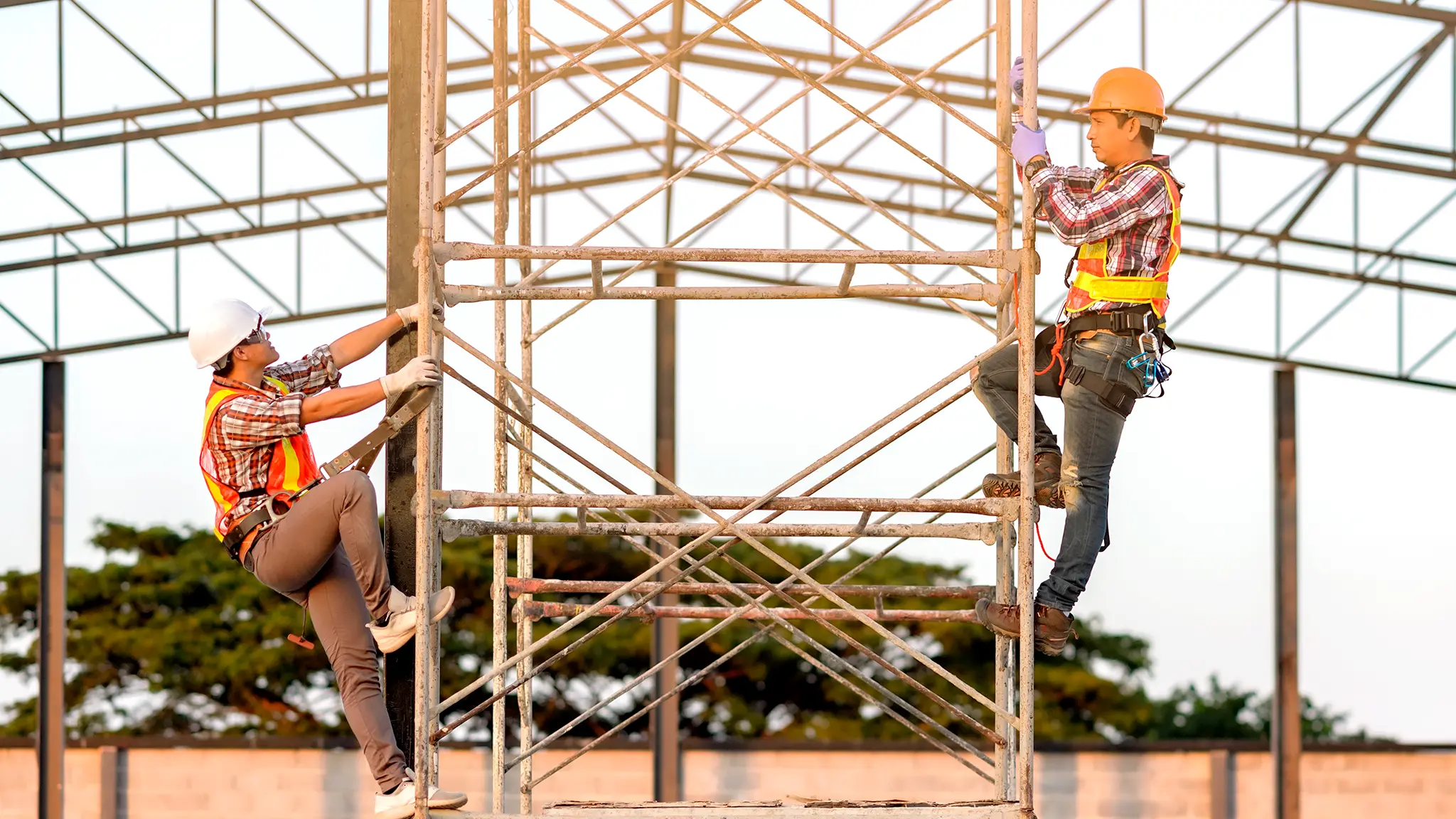It is an activity that is widely carried out in many industries such as working at height, maintenance and repair, especially the construction sector, but also carries serious risks in terms of occupational safety. As EKSED, we discuss the risks and precautions that can be taken regarding the safety of working at height in detail for you.
Here's what you need to know about working at height safety:
Risks and Potential Hazards of Working at Height
Working at height is an activity that is commonly performed in many industries but carries serious risks. Understanding the potential hazards encountered during this activity is important to ensure the safety of employers and employees. Here's a more detailed look at the risks and potential dangers of working at height:
1. Fall Hazard: One of the most obvious dangers of working at height is the risk of falling. Workers are at risk of falling from platforms, ladders or the sides of tall structures. This could cause serious injury or even death.
2. Falling Objects: Falling of tools, equipment or materials used while working at height can cause serious harm to people working below. Therefore, it is important to keep falling objects under control and store them properly.
3. Electric Shocks and Fire Hazard: There is a risk of contact with power lines, cables and high voltage equipment in working areas at height. This may cause electric shocks or even fires. Particular attention should be paid to electrical safety, especially in construction sites.
4. Bad Weather Conditions: Bad weather conditions such as wind, rain, snow or dense fog can adversely affect the safety of working at height. Under these conditions, the risk of workers losing their balance increases and the working environment becomes even more dangerous.
5. Toxic Gases and Chemicals: In certain industries, there may be toxic gases or chemicals that can be exposed to when working at height. Inhalation or skin contact of these substances can cause serious health problems.
6. Heat and Cold Stress: Working at height may pose the risk of exposure to extremely hot or cold weather conditions. Heat stress can affect the health of workers in environments with high temperatures and humidity, while cold stress can pose a risk for workers exposed to low temperatures.
7. Fatigue and Distraction: Working at height for long periods of time can cause fatigue and distraction in workers. This can increase the risk of making mistakes and causing accidents.
Working at Height Safety Measures and Strategies
1. Risk Assessment and Planning: A detailed risk assessment should be carried out before every work at height activity. This assessment includes examining the work area, identifying potential hazards, and planning appropriate precautions. Employers should identify risks and organize the work process according to this information.
2. Education and Awareness Raising: Employees should be given regular training on topics such as fall prevention techniques, how to use personal protective equipment, and safe climbing and descent techniques. Additionally, awareness programs should be organized to ensure that workers understand the risks and safety precautions of working at height.
3. Personal Protective Equipment (PPE): Appropriate personal protective equipment when working at height is vital in preventing falls. This equipment includes seat belts, fall protection belts, helmets, straps and appropriate shoes. Employers should provide training to employees on how to use this equipment.
4. Regular Maintenance of Occupational Safety Equipment: All occupational safety equipment should be checked and maintained regularly. This is important to ensure the correct operation of equipment and the safety of employees. Regular maintenance and control of equipment helps prevent possible malfunctions and ensure the safety of workers.
5. Control and Monitoring: Working at height activities should be regularly inspected and monitored. This allows employers to review the measures taken to ensure the safety of employees and make adjustments if necessary. Inspections help identify and correct potential hazards.
6. Emergency Preparedness and Recovery Plans: It is important to be prepared for possible emergencies when working at height. Employers should create emergency evacuation procedures and rescue plans and provide training to their employees. This helps minimize the effects of possible accidents and increases the ability to deal with emergencies.
Guarantee Your Safety While Working at Height
Working at height safety is an extremely critical issue in terms of occupational health and safety, and employers and employees should attach great importance to this issue. Providing a safe working environment is possible by taking the right precautions and implementing effective strategies. As EKSED, we are pleased to contribute to the creation of a safe work environment by providing consultancy and training services to employers on working at height safety.
Our company offers a team specialized in working at height and a comprehensive consultancy service. We aim to increase safety standards in workplaces by producing solutions specific to the needs of employers and employees. In collaboration with each of our customers, we strive to determine the most appropriate and effective security measures.
If you need further information or advice on working at height safety, please contact us. Our professional and expert team will be happy to work with you to provide solutions tailored to your business needs. Contact us today to take the right steps for a safe work environment.



 by
by